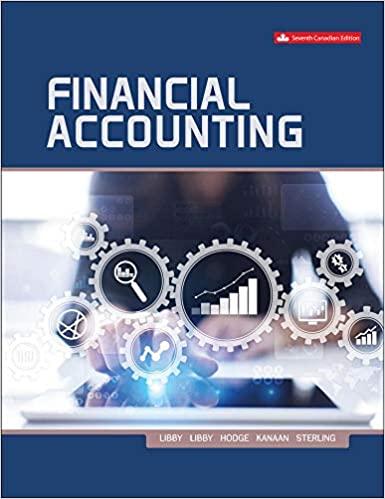Question
Note: some answers I have already gotten correct. The blank ones in the final chart are what is needed. Thanks! Required Calculate the following ratios
Note: some answers I have already gotten correct. The blank ones in the final chart are what is needed. Thanks!
Required
Calculate the following ratios for Year 4 and Year 3. Since Year 2 numbers are not presented do not use averages when calculating the ratios for Year 3. Instead, use the number presented on the Year 3 balance sheet. Note: Round ratio answers to 2 decimal places unless otherwise indicated.
- Working capital.
- Current ratio.
- Quick ratio.
- Receivables turnover (beginning receivables at January 1, Year 3, were $50,000).
- Average days to collect accounts receivable.
Note: Use 365 days in a year. Round your intermediate calculations to 2 decimal places and your final answers to the nearest whole number.
- Inventory turnover (beginning inventory at January 1, Year 3, was $156,000).
- Number of days to sell inventory.
Note: Use 365 days in a year. Round your intermediate calculations to 2 decimal places and your final answers to the nearest whole number.
- Debt-to-assets ratio.
Note: Round your answers to the nearest whole percent.
- Debt-to-equity ratio.
- Number of times interest was earned.
- Plant assets to long-term debt.
- Net margin.
- Turnover of assets (average total assets in Year 3 is $551,600).
- Return on investment (average total assets in Year 3 is $551,600).
- Return on equity (average stockholders' equity in Year 3 is $249,300).
- Earnings per share (total shares outstanding is unchanged).
- Book value per share of common stock.
- Price-earnings ratio (market price per share: Year 3, $12.55; Year 4, $14.10).
Note: Round your intermediate calculations and final answer to 2 decimal places.
- Dividend yield on common stock.
Financial statements for Thornton Company follow.
| THORNTON COMPANY | ||
| Balance Sheets As of December 31 | ||
| Year 4 | Year 3 | |
|---|---|---|
| Assets | ||
| Current assets | ||
| Cash | $ 24,000 | $ 20,000 |
| Marketable securities | 21,600 | 7,600 |
| Accounts receivable (net) | 57,000 | 49,000 |
| Inventories | 142,000 | 150,000 |
| Prepaid items | 26,000 | 11,000 |
| Total current assets | 270,600 | 237,600 |
| Investments | 22,000 | 15,000 |
| Plant (net) | 290,000 | 275,000 |
| Land | 29,000 | 24,000 |
| Total assets | $ 611,600 | $ 551,600 |
| Liabilities and Stockholders Equity | ||
| Liabilities | ||
| Current liabilities | ||
| Notes payable | $ 40,000 | $ 17,300 |
| Accounts payable | 113,800 | 100,000 |
| Salaries payable | 25,000 | 19,000 |
| Total current liabilities | 178,800 | 136,300 |
| Noncurrent liabilities | ||
| Bonds payable | 140,000 | 140,000 |
| Other | 31,000 | 26,000 |
| Total noncurrent liabilities | 171,000 | 166,000 |
| Total liabilities | 349,800 | 302,300 |
| Stockholders equity | ||
| Preferred stock, (par value $10, 4% cumulative, non-participating; 6,000 shares authorized and issued) | 60,000 | 60,000 |
| Common stock (no par; 50,000 shares authorized; 10,000 shares issued) | 60,000 | 60,000 |
| Retained earnings | 141,800 | 129,300 |
| Total stockholders equity | 261,800 | 249,300 |
| Total liabilities and stockholders equity | $ 611,600 | $ 551,600 |
| THORNTON COMPANY | ||
| Statements of Income and Retained Earnings For the Years Ended December 31 | ||
| Year 4 | Year 3 | |
|---|---|---|
| Revenues | ||
| Sales (net) | $ 390,000 | $ 370,000 |
| Other revenues | 11,200 | 8,200 |
| Total revenues | 401,200 | 378,200 |
| Expenses | ||
| Cost of goods sold | 195,000 | 151,000 |
| Selling, general, and administrative | 71,000 | 66,000 |
| Interest expense | 12,800 | 12,000 |
| Income tax expense | 103,000 | 102,000 |
| Total expenses | 381,800 | 331,000 |
| Net earnings (net income) | 19,400 | 47,200 |
| Retained earnings, January 1 | 129,300 | 89,000 |
| Less: Preferred stock dividends | 2,400 | 2,400 |
| Common stock dividends | 4,500 | 4,500 |
| Retained earnings, December 31 | $ 141,800 | $ 129,300 |
| |||||||||||||||||||||||||||||||||||||||||||||||||||||||||||||||||||||||||||||||||||||||||||||||||||||
Step by Step Solution
There are 3 Steps involved in it
Step: 1

Get Instant Access to Expert-Tailored Solutions
See step-by-step solutions with expert insights and AI powered tools for academic success
Step: 2

Step: 3

Ace Your Homework with AI
Get the answers you need in no time with our AI-driven, step-by-step assistance
Get Started


